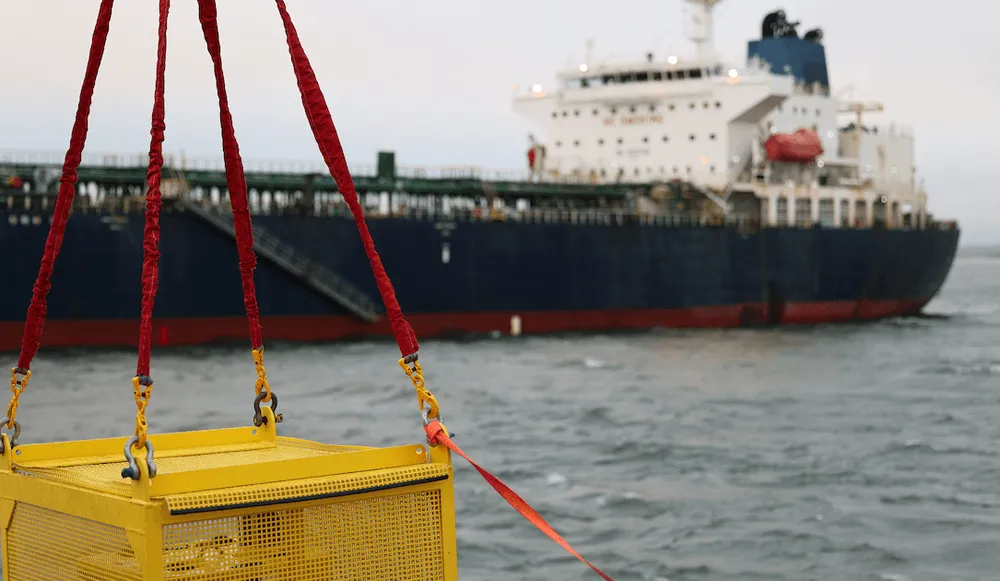Finland seizes suspected Russian spy ship and questions crew following cable breaks
Poliisi, Finland’s police service, has transferred a cargo ship suspected of breaking several submarine cables in the Baltic Sea to an anchorage point near the port of Porvoo, east of Helsinki, for further investigation.
The Eagle S, which had departed from the Russian port of Ust-Luga on Christmas Day, is suspected of dragging its anchor for several miles resulting in the complete severing of multiple cables, including the Estlink 2 power cable and four telecommunications cables.
Shortly following the breaks, the Finnish authorities dispatched armed units to board the ship by helicopter. The crew did not resist, and the Eagle S was seized by the country’s National Bureau of Investigation (NBI) on suspicion of aggravated criminal mischief.
In a statement on Monday, the NBI said it was now also investigating “aggravated interference of communications” over the damage to the telecommunications cables, adding: “It is possible that the offences will become more specific or even change as the criminal investigation progresses.”
Sami Paila, the NBI’s tactical lead for the operation, said investigators collected material on board the ship and began analysing it immediately. “Although we needed to move fast at the start of the criminal investigation, it is ultimately a question of a challenging and time-consuming process,” he added.
The police also seized devices related to the vessel's passage, and the data contained in them is being analysed, the NBI said. This technical investigation is still underway, and the Eagle S crew are continuing to be questioned. “The purpose is to create an overall picture of what has happened on the board, and the questionings have been carried out in good cooperation with the crew,” the NBI stated on Monday.
“The authorities have taken care of the maintenance of both the vessel and the crew during the investigation,” added the NBI’s Detective Chief Inspector Elina Katajamäki. The agency said the investigation may take several weeks or months to complete.
According to a report from shipping publication Lloyd’s List, the Eagle S previously had “abnormal” equipment on board that its source suspected had been used to monitor NATO naval and aircraft radio communications, and to drop “sensors-type devices” in the English Channel.
In a statement on Sunday, the NBI said “the investigation into the events in the Gulf of Finland is still at an early stage” and had been hindered by poor weather conditions.
At sea, the investigators are attempting underwater operations to identify the activities of the Eagle S using a remotely operated submersible vehicle, although these were discontinued on Sunday due to the weather.
“With the underwater operations, we have been able to identify the dragging track at the seabed from the beginning to the end. The track is dozens of kilometres in length. For the time being, the possible location where the anchor came off has not been established,” said Detective Chief Inspector Sami Paila, the NBI operation’s tactical lead.
The incident, which comes amid heightened concern over a range of Russian sabotage and subversion activities, is the latest to highlight how vulnerable subsea cables are to sabotage as well as to accidental cuts. Sweden, Germany and Lithuania have all launched criminal investigations following an incident in November in which a Chinese ship allegedly damaged telecommunications infrastructure.
That month, the United Nations and other international agencies created an advisory body focused on the protection of submarine cables in the wake of dozens of incidents in which they were broken.
Alexander Martin
is the UK Editor for Recorded Future News. He was previously a technology reporter for Sky News and is also a fellow at the European Cyber Conflict Research Initiative.



